Visual Effects Art Director Steven Messing used the software to produce physical sets, CG environments, creatures, costumes, and spaceship designs.
Veteran Hollywood art director Steven Messing is no stranger to creating science fiction and fantasy environments. He created original setting for such recent movies as Avatar, Alice in Wonderland, and Transformers: Dark of the Moon. For the new Sir Ridley Scott film Prometheus Messing was asked to redefine and design complex set pieces originally created for the original Alien film. Scott wanted to bring a contemporary visual quality that would appeal to today’s filmgoers.
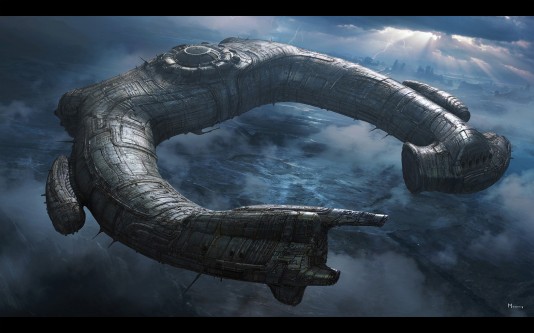
Messing’s work on Prometheus included designing CG models for the Prologue and Juggernaut Alien spacecrafts, the Pilot Chamber set located within the Juggernaut ship and the larger Compound Mound set located on the Alien planet surface.
“Ridley was very proud of the original Engineer’s spaceship (known as the Juggernaut) but he felt it looked primitive by today’s standards,” says Messing. “He wanted to convey a more believable level of scale and detail. He also asked us to give the Pilot’s Chamber set a facelift to include a finer degree of mechanical filigree, and create additional set pieces to support specific story points in the script.” Messing produced roughly 200 unique images for the film including matte paintings, key-frame storyboards, set designs and visual effects paint-overs of final CG shots.
Messing’s CG tool of choice on Prometheus was Cinema 4D, from the Maxon division of Nemetschek. He leveraged the 3D animation software to produce several physical set builds as well as CG environments, creatures, costumes and spaceship designs that contributed to the aesthetic and mythological visual tone of the sci-fi film. He also worked through post-production creating matte shots and additional designs under VFX Supervisor, Richard Stammers and VFX Producer, Allen Maris.
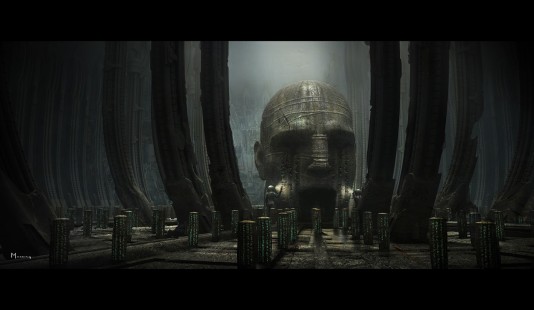
Prometheus, directed by Alien and Blade Runner director, Ridley Scott, tells the mythological story of a team of explorers who journey through the universe on the spaceship “Prometheus” to investigate alien life forms. When the scientific team becomes stranded in an alien world, they struggle to survive, fighting a terrifying battle to save their own lives, and the future of the human race.
Messing spent weeks refining CG models that relied extensively on the UV texture displacement maps and MoGraph module in Cinema 4D to create the new Pilot’s Chamber set. This included creating scale models of the center dais, desk console, sleeping pods and chamber walls. With fellow designer, Ben Procter, Messing also helped refine the Pilot’s chair that rises from the center dais in the Juggernaut.
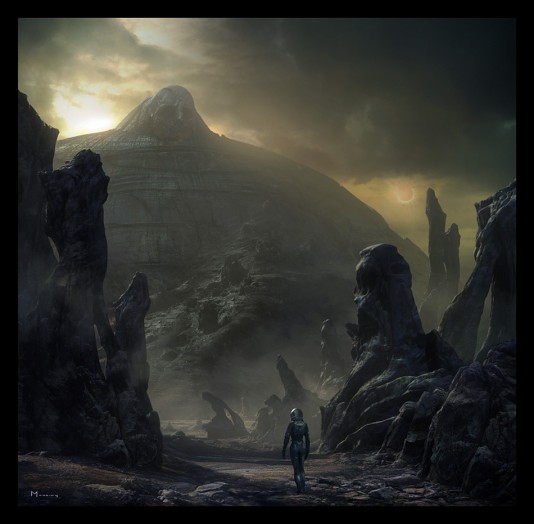
“We sorted through a ton of (Motion Picture) Academy archival reference to make the chair as accurate as possible,” explains Messing. “The original draftings had been lost and it was truly a labor of love to recreate this whole set. Cinema 4D afforded us a highly flexible solution for pre-visualizing and experimenting with design elements such as intricate, surface detail textures and patterns that could be presented to Ridley Scott for approvals in a practical timeframe.
“Final designs were then easily displaced and exported into scale-accurate hard geometry, which was delivered as very detailed model sheets for the set drafting and also to world-class visual effects studios including MPC in London and WETA in New Zealand for completion of the final digital set extensions.”
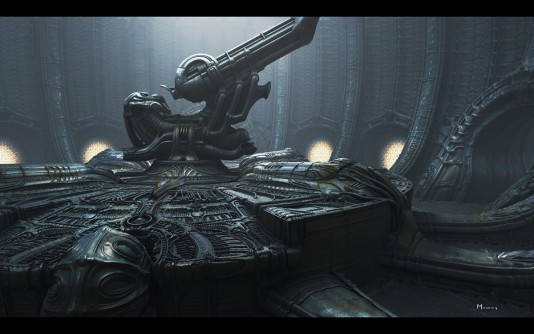
Cinema 4D was also utilized in the opening shot of Prometheus that gives the audience a glimpse of what appears to be primordial Earth being revealed from shadow. “The planet layers were a combination of clouds, oceans, and continental land masses that all cast shadows as the sun rises, revealing the planet,” explains Messing. “I used Cinema 4D’s Global illumination engine and ray traced area shadows to achieve a realistic layered effect at an accurate scale.” Messing also created a dozen very detailed and dramatic pinnacle formations that were painted over and layered together with atmospheric elements to create interesting compositions detailing the scope and grandeur of the Alien planet’s landscape.
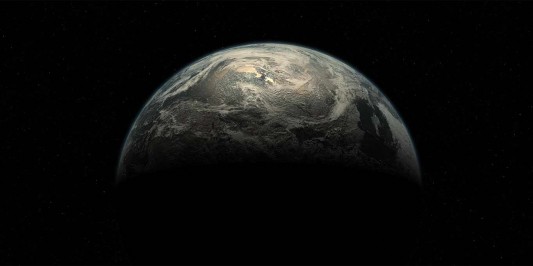
Messing is currently providing VFX art direction on Gangster Squad and Oz: the Great and Powerful. Other upcoming titles he is associated with include Life of Pi, the next installment in the reboot of Star Trek, and Pirates of the Caribbean 5.






